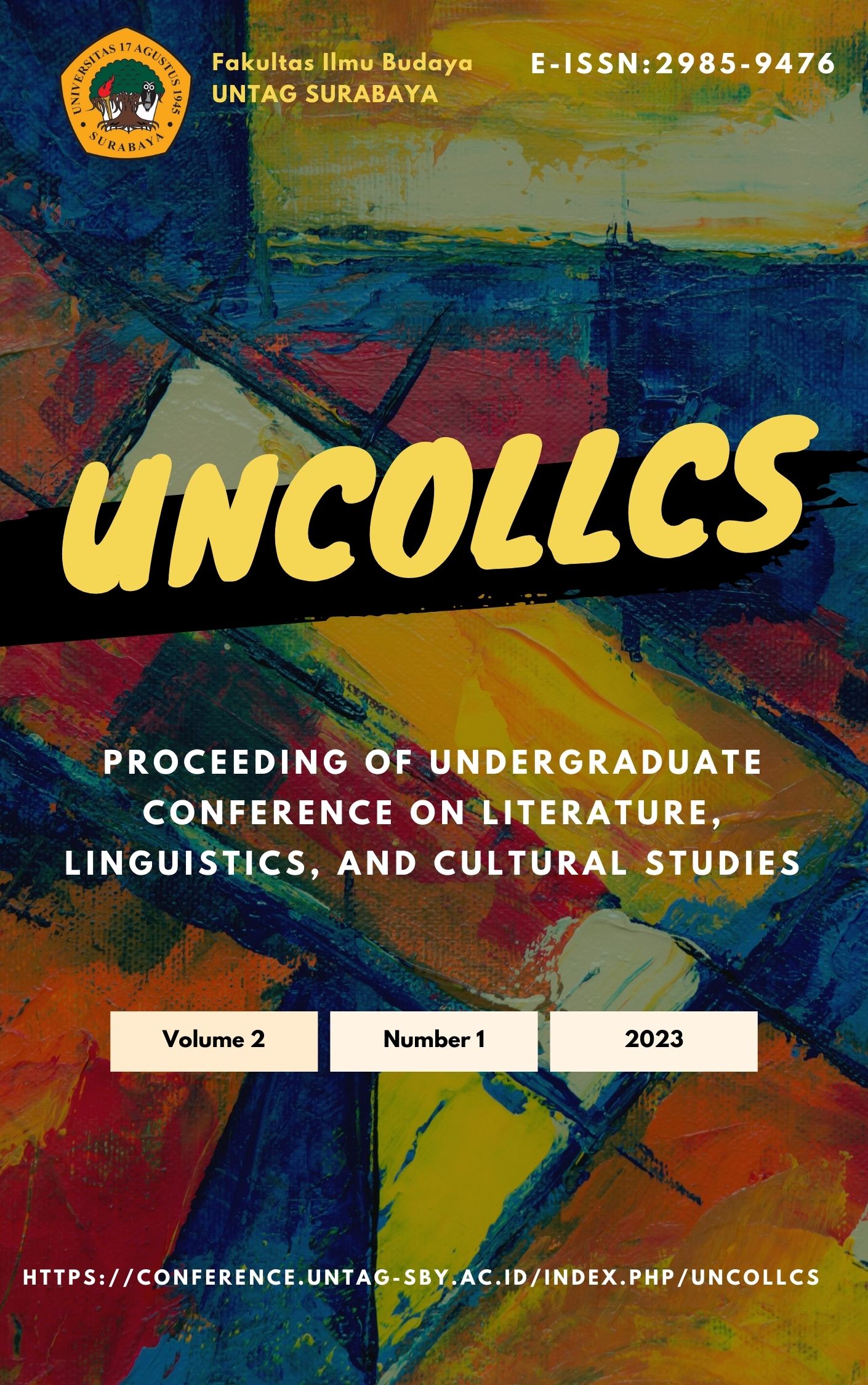An analysis of derogation used in characters conversation in game God of War 2018
DOI:
https://doi.org/10.30996/uncollcs.v2i1.2436Abstract
Conversations could also be found in entertainment media such as movies, video games, music, and other forms of media. Character interactions in a game could significantly impact the plot, gameplay, and overall enjoyment. Dialogue that denigrated or humiliated other people or particular groups could be found in both movies and video games. The purpose of this research was to identify the kind of derogation functions used and the kind of discursive moves in the game God Of War 2018. This research used a descriptive qualitative method. The data collection was done by selecting every word that referred to the word derogation, classifying it into discursive move categories and determining the function, and then analyzing by using Critical Discourse Analysis of positive self-presentation and other negative presentations by Teun A. Van Dijk. This research showed that in the game God Of War 2018, there were nine types of discursive moves, namely actor description, authority, empathy, self-glorification, and polarization Us-them categorization, norm Expression, populism, and example or illustration utterances.
References
Fairclough, N. (1992). Discourse in social change. In Language and Power. Polity Press In association with Blackwell Publishing. https://doi.org/10.4324/9781315838250-13
Hymes, D. (1972). Models of the interaction of the social life. In Directions in sociolinguistics. The ethnography of communication (pp. 35–71). https://onlinelibrary.wiley.com/doi/10.1002/9780470758434.ch1
Van Dijk, T. A. (1993). Elite discourse and racism. In International Journal of Intercultural Relations (Vol. 18, Issue 1). SAGE. https://doi.org/10.1016/0147-1767(94)90010-8
Van Dijk, T. A. (2000). The Reality of Racism. Für die Wirklichkeit (=Festschrift for Siegfried Schmidt). (pp. 211-226). Wiesbaden: Westdeutscher Verlag.
Van Dijk, T. A. (2006). Discourse and manipulation. Discourse and Society, 17(3), 359–383. https://doi.org/10.1177/0957926506060250
Van Leeuwen, T. (2008). Discourse And Practice. OXFORD UNIVERSITY PRESS.
Wodak, R., & Meyer, M. (2011). Methods of Critical Discourse Analysis. Methods of Critical Discourse Analysis. https://doi.org/10.4135/9780857028020
Fairclough, N. (1992). Discourse in social change. In Language and Power. Polity Press In association with Blackwell Publishing. https://doi.org/10.4324/9781315838250-13
Hymes, D. (1972). Models of the interaction of the social life. In Directions in sociolinguistics. The ethnography of communication (pp. 35–71). https://onlinelibrary.wiley.com/doi/10.1002/9780470758434.ch1
Van Dijk, T. A. (1993). Elite discourse and racism. In International Journal of Intercultural Relations (Vol. 18, Issue 1). SAGE. https://doi.org/10.1016/0147-1767(94)90010-8
Van Dijk, T. A. (2006). Discourse and manipulation. Discourse and Society, 17(3), 359–383. https://doi.org/10.1177/0957926506060250
Van Leeuwen, T. (2008). Discourse And Practice. OXFORD UNIVERSITY PRESS.
Wodak, R., & Meyer, M. (2011). Methods of Critical Discourse Analysis. Methods of Critical Discourse Analysis. https://doi.org/10.4135/9780857028020
Downloads
Published
How to Cite
Issue
Section
License
Copyright (c) 2023 Proceeding of Undergraduate Conference on Literature, Linguistic, and Cultural Studies

This work is licensed under a Creative Commons Attribution-NonCommercial-ShareAlike 4.0 International License.










